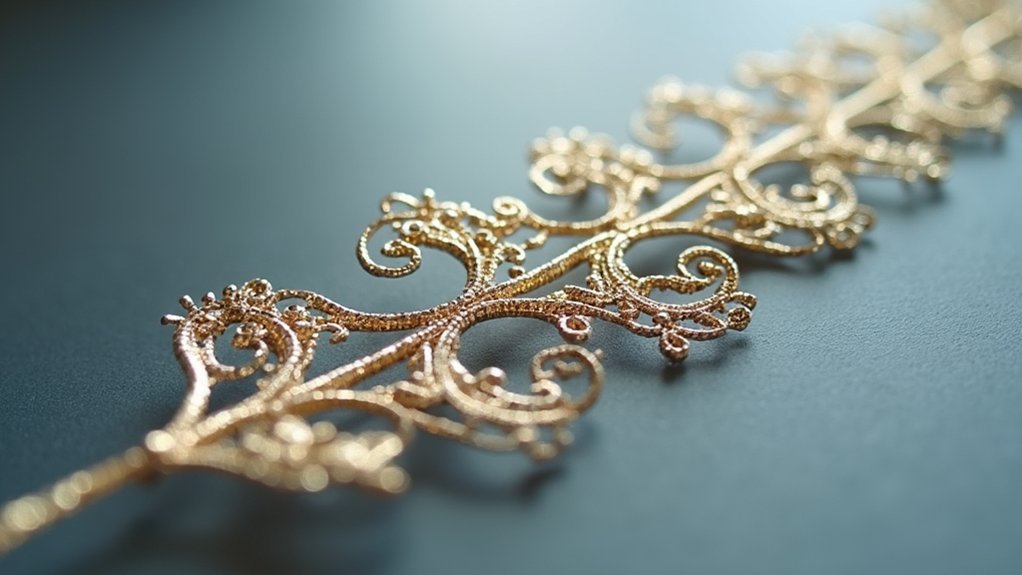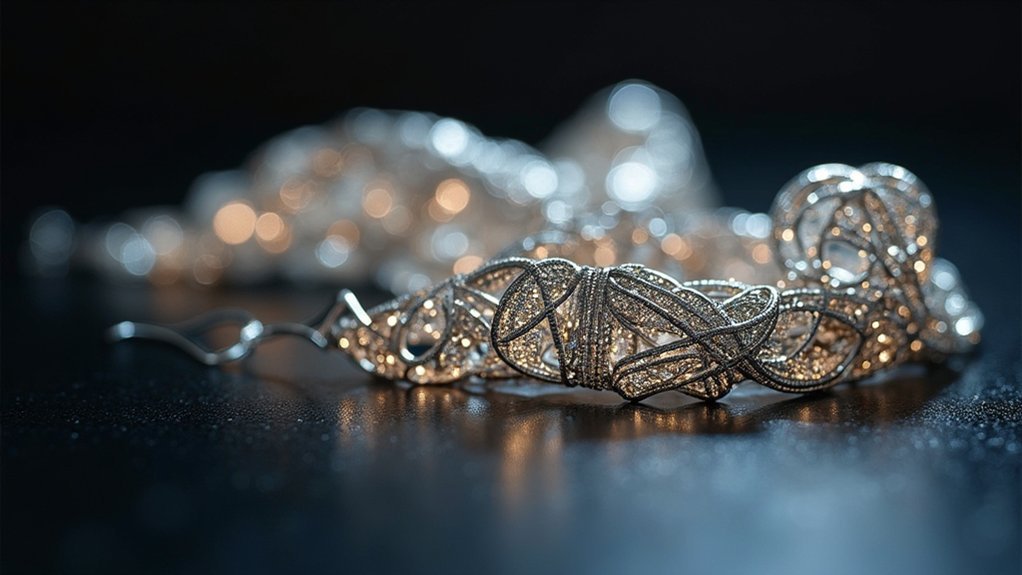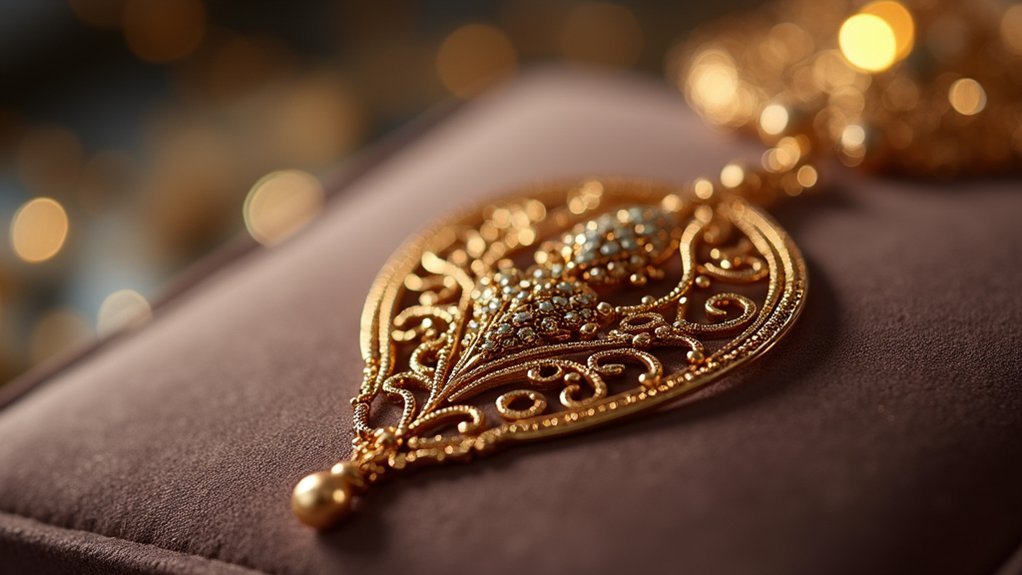You’ll achieve stunning filigree prints by positioning intricate patterns at 30-45 degree angles to minimize support structures while maintaining detail clarity. Maximize your printer’s resolution and slightly rotate curved surfaces to prevent moiré interference patterns that can ruin delicate wireframe aesthetics. Place minimal supports only in hidden areas and use warm water soaking with specialized tools for gentle removal without damaging fragile elements. These foundational techniques reveal the secrets to preserving every elegant detail.
Optimal Model Orientation for Intricate Filigree Details

How you orient your filigree model before printing can make the difference between a masterpiece and a mangled mess. When creating filigree jewelry, ideal model orientation demands strategic positioning of your intricate patterns.
Position delicate features at 30-45 degree angles to minimize supports while maintaining clarity. Align flat surfaces parallel to your build plate for superior layer adhesion and reduced visible lines.
Strategic angling at 30-45 degrees reduces support structures while parallel plate alignment ensures superior adhesion and cleaner surface finishes.
Place stress-prone areas parallel to the z-axis to maximize structural integrity of your finished piece. Experiment with different orientations in your slicing software to minimize support contact on visible surfaces.
Use maximum printer resolution and tilt curved surfaces to prevent moiré effects. This attention to detail in jewelry making transforms complex design challenges into stunning, professionally-crafted pieces with exceptional durability.
Minimizing Moiré Effects in Delicate Wire Patterns
When delicate wire patterns create unwanted moiré effects, you’re seeing interference patterns that can ruin an otherwise perfect filigree print.
These visual artifacts plague intricate patterns in handmade jewelry, especially when mimicking traditional filigree work that would typically use fine silver wire and a rolling mill.
Combat moiré effects with these proven strategies:
- Maximize printing resolution – Higher settings capture delicate design elements more accurately
- Adjust model scaling – Slight size changes disrupt overlapping interference patterns
- Rotate curved surfaces – Print at small angles to avoid build plate alignment
- Avoid parallel flat patterns – Prevent direct orientation with the printing surface
- Apply post-processing techniques – Polish and sand remaining artifacts away
These filigree techniques guarantee your intricate patterns maintain their elegance without visual interference compromising the final result.
Support Structure Placement for Complex Filigree Geometries

Strategic support placement becomes essential as complex filigree geometries challenge even experienced 3D printer operators with their intricate overhangs and delicate wireframe structures.
You’ll need to leverage your slicing software to identify critical areas requiring support structures while avoiding interference with delicate features of your intricate design.
Adopt a minimal support strategy that maintains structural integrity without obscuring fine filigree details. Position supports in less visible areas to reduce post-processing time and preserve your design’s aesthetic appeal.
Orient your piece at 30-45 degrees to minimize extensive support requirements while ensuring adequate backing for critical overhangs.
During removal, you’ll want precision techniques like warm water soaking or specialized tools to prevent damage to your complex geometries during the delicate extraction process.
Frequently Asked Questions
How Do They Make Filigree Jewelry?
You’ll create fine 26-gauge silver wire, twist and anneal it for flexibility, then construct a frame using steel tubing. You’ll weave intricate patterns, solder pieces together using melted silver coins, and clean in pickle solution.
Is There Anything Illegal to 3D Print?
You can’t legally 3D print copyrighted designs, firearms, counterfeit items, or unauthorized medical devices. You’ll face legal consequences if you create objects violating intellectual property laws or local regulations.
Is It Safe to Wear 3D Printed Jewelry?
You can safely wear 3D printed jewelry if it’s made from biocompatible materials like certain resins or metals. Avoid cheap plastics that might irritate your skin, and choose properly post-processed pieces.
Can You 3D Print 14K Gold?
You can 3D print 14K gold using specialized techniques like Direct Metal Laser Sintering, which fuses gold powder layers. You’ll need post-processing like polishing, and it enables intricate designs impossible with traditional methods.
In Summary
You’ve now got three essential strategies to tackle filigree jewelry printing challenges. Remember, orientation isn’t just about build speed—it’s about preserving those delicate details that make filigree special. Don’t underestimate moiré effects; they’ll ruin intricate patterns faster than poor support placement. When you’re positioning supports, think like a surgeon—precise, minimal, and strategic. Master these techniques, and you’ll consistently produce stunning filigree pieces that showcase the true artistry of 3D printing.




Leave a Reply